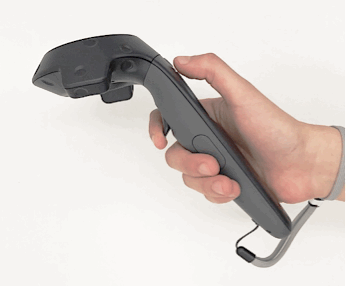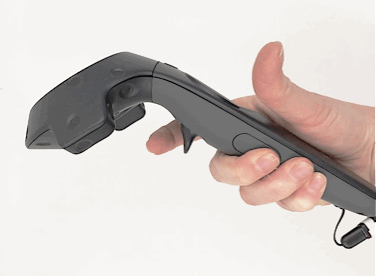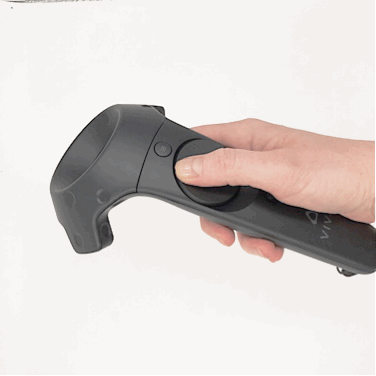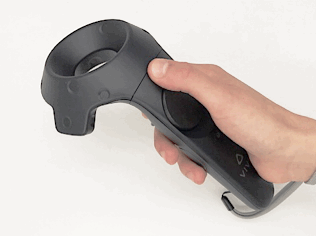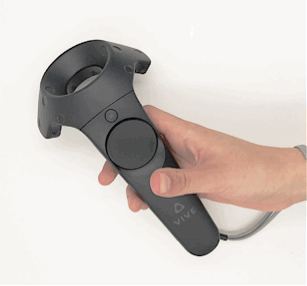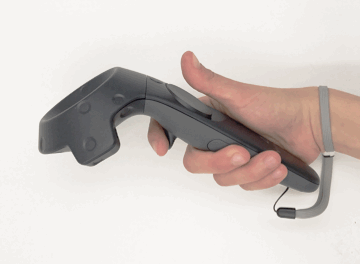UX Patterns for Virtual Reality
Design Patterns and Considerations
-
Environment
ColorColor sets the mood of your piece. You can choose light, friendly colors or dark, foreboding ones. You should aim to keep your color scheme constant to create a consistent and continuous experience for your user. See Cosmic Trip for an example of a highly constant and pleasing color scheme.
Time of DayIn VR you can set the time of day in your scene, or you can change the time of day accordingly. The time of day and the colors you choose can effect the mood activity level of your users. It can put them in a creative or melancholy mindset.
GravityWhat is the gravitational pull for your reality? What happens when you fall?
Background NoiseWhat is going on in the environment that can be set in the distance to give a sense of space to the player? Crickets? Machinery? Fill it in. Otherwise that distance is empty.
Effect of your presence inside the environmentWhat happens when you move? Does the environment change or sound different? and provides the player ato build anticipation for the next scene.
SeguesWhat does a new environment sound like when you enter it from a teleport? You want to fade reality (and associated sounds) out and then fade them in. This gives you more cover for the game loading in the background and provides the player ato build anticipation for the next scene.
Fast TransitionIf you need to change scenes quickly load multiple at once and move between them using barriers. That way you won’t need to entirely load a new scene. This will take more RAM, but it will give you an instantaneous effect. Usually it is nice to give the user a little break before they enter a new zone.
-
Motion
Movement describes the experience of a player changing position in the virtual world, simulating the effect of progress.
Dynamic Motion
Teleportation
Teleportation can be used in any enviroment to quickly move around a space and to also change environments. Teleportation allows a player to actively switch positions with an aimed toggle.
Teleporation allows for the quick exploration of a space, easy aiming and targeting, and reduces nausea.
Commonly used buttons.
Teleportation in Cosmic Trip. Pull up a panel and step through.
Teleportation in TiltBrush with a lighter step icon.
Teleportation in the Portal-like game.
Static Motion
Viewing PlatformThe Body VR.
The player rides on a viewing platfom on a fixed route, but can change their perspective by looking or turning around.
TrunkJunkers
Player controls a bird or other flying object in three dimensions without moving in physical, non-virtual space.
Riding / Flying
Player controls a bird or other flying object in three dimensions without moving in physical, non-virtual space.
Limited Room
A play environment where everything is in reach.
Job Simulator: Convenience Store
The Blu
-
Touch
Every interaction needs a sense of touch. The proper sense at the proper time leads to a greater sense of embodiment. This makes people more comfortable in their environment.
Interactive Examples:
Rain: intermediate random haptic spikes (like TV buzz).
Ladder: (buzz controllers on palm with the touch of each rung).
Cloud: Is someone falling through a cloud? Use light haptics with a noise filter to add a light feeling for the duration of the pass through.
Tips:
Test: Make sure the motion is believable.
Sync: Sync up your sounds for proper effect.
Don’t overdo it: A little haptics go a long way. Constant haptics can distract from cognitive processing.
-
Selection
Select by standing or passing the controller through. (beginning of in Cosmic Trip game).
-
View
Perspective (floor-level, p high, zoom in and out) Zoom level.
Consider First person, third person, omniscient (view of any person, become any other thing (new game from Katamari Dynasty)). One could make a game with a super weird perspective or one that keeps changing all of the time with local gravity like an Escher map.
- Above
- Below
- Floor
- Tabletop
-
Effects
Every interaction (intersection) must have an effect.
Visual effect
Audio effect
Haptic effect
Objects should have vibration when they enter or leave your hand.
Did you hit a wall? Consider an echo off the wall, the material of the object, the material of the wall, and attach some visual effect (sparks, etc.).
-
Note
Yes, this website is a work in progress and is not yet ready for prime time! Expect new content in the future.
Written and maintained by Caseorganic.com
Hands provided by case and liooil
